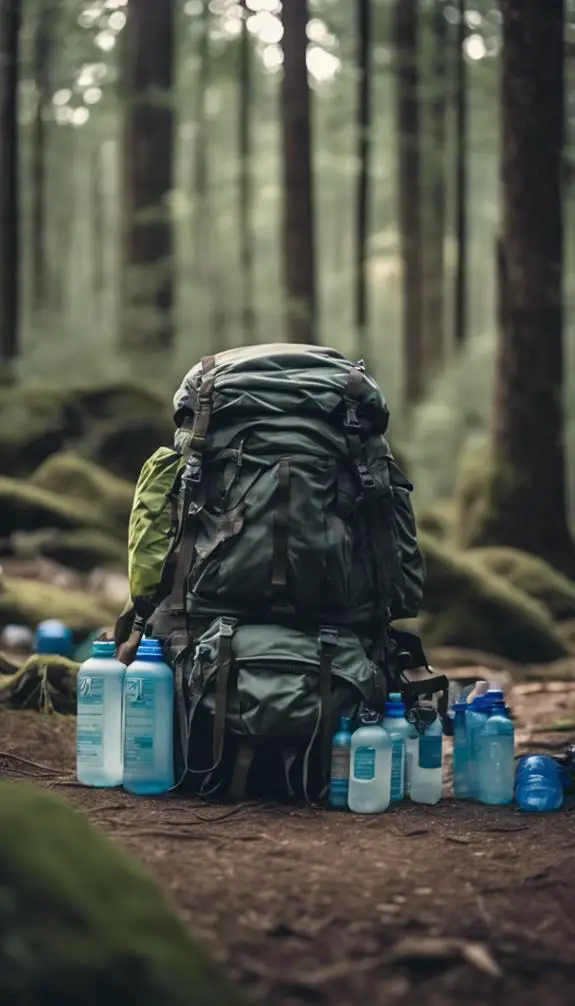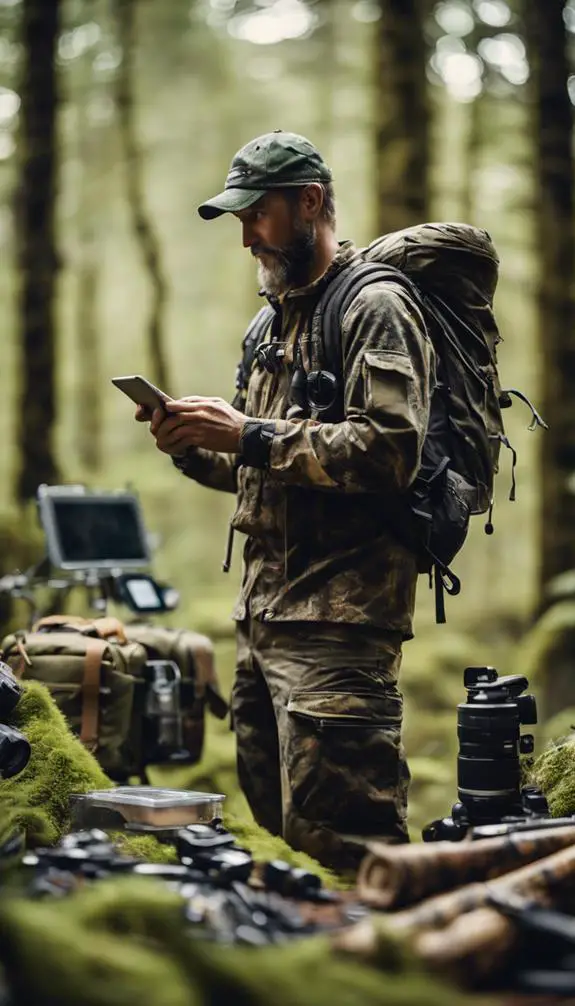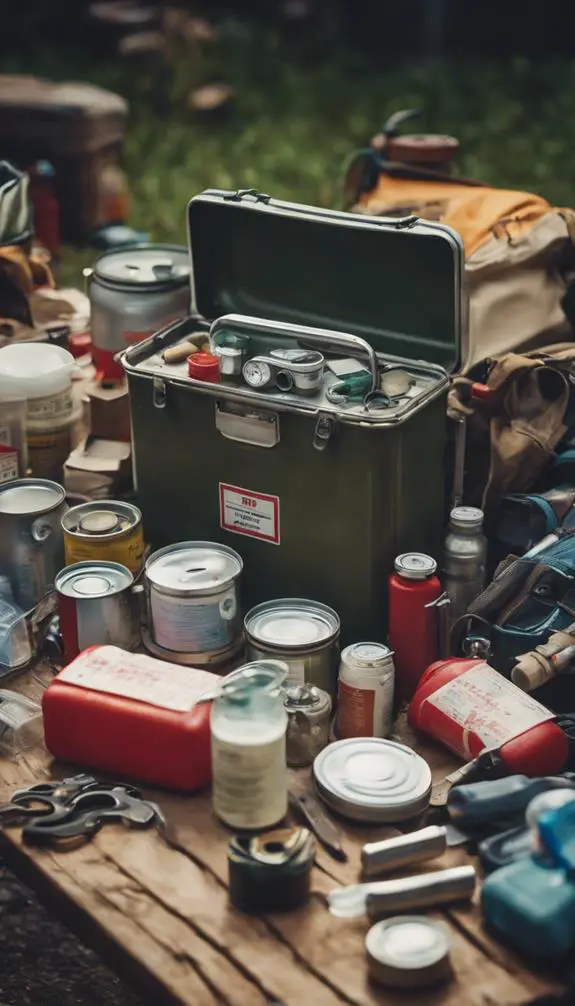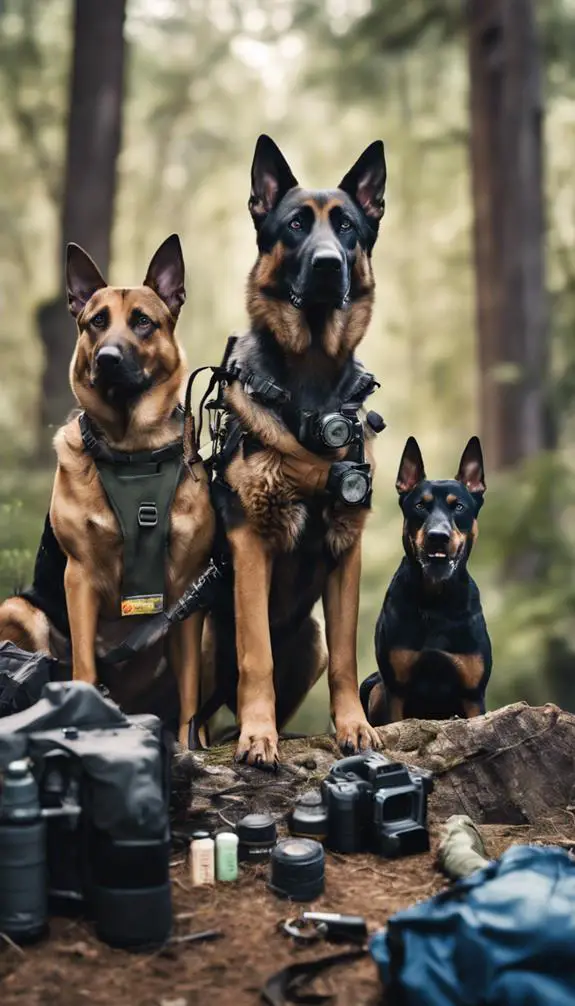When disaster strikes, you'll want to be prepared with a bug-out bag that's packed with the right gear. You're not just throwing some stuff in a backpack, you're curating a collection of essentials that'll keep you safe and healthy for at least three days. So, what makes the cut? You'll need water purification and hydration options, a first aid kit that covers the basics, and shelter and protection items like a tent and sleeping bag. But that's just the beginning – you'll also need to ponder fire starting gear, navigation tools, and communication devices. What else will you need to stay ahead of the game?
Summary
- A bug-out bag should have at least three days' worth of clean drinking water and a water purification system, such as filters or tablets.
- A first aid kit with basic supplies, personal medications, and pain relievers is essential for treating injuries and maintaining health.
- A reliable shelter and protection from the elements, including a tent, tarp, sleeping bag, and space blanket, are crucial for survival.
- A fire starter kit, cooking pot, and utensils are necessary for preparing warm meals and staying energized.
- Navigation and communication tools, such as a compass, map, cell phone, and whistle, are vital for staying on track and signaling for help.
Water Purification and Hydration
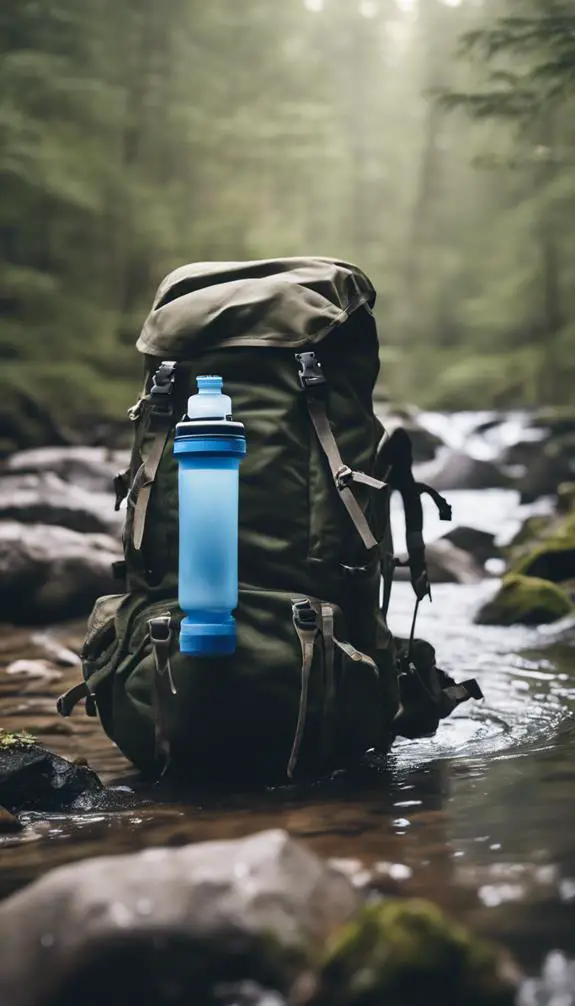
At least three days' worth of clean drinking water is essential for survival in a bug-out situation.
You'll need a reliable way to purify water to stay hydrated. Pack water filters or purification tablets in your bug-out bag to guarantee access to clean drinking water.
Water filters are effective against bacteria, viruses, and parasites, while purification tablets can kill 99.9% of bacteria and viruses.
Consider a water filter straw or a portable water filter that can be used to purify water from any source. Don't forget to store your purification tablets in a waterproof container to keep them dry.
With these essentials, you'll be prepared to find and purify water in any situation, giving you the freedom to bug out with confidence.
First Aid and Medical Supplies

You've got your water purification system in place, now it's time to think about treating injuries and illnesses on the go.
Medical emergencies can happen anytime, anywhere, and being prepared can mean the difference between life and death.
Your bug out bag should include a first aid kit with basic supplies like bandages, antiseptic wipes, and pain relievers.
Don't forget to pack any personal medications you or your family members may need.
For pain management, consider adding over-the-counter pain relievers like acetaminophen or ibuprofen.
In case of more serious injuries, include items like splints, tourniquets, and hemostatic agents.
Remember to check the expiration dates of your supplies and update them as needed.
Shelter and Protection Essentials
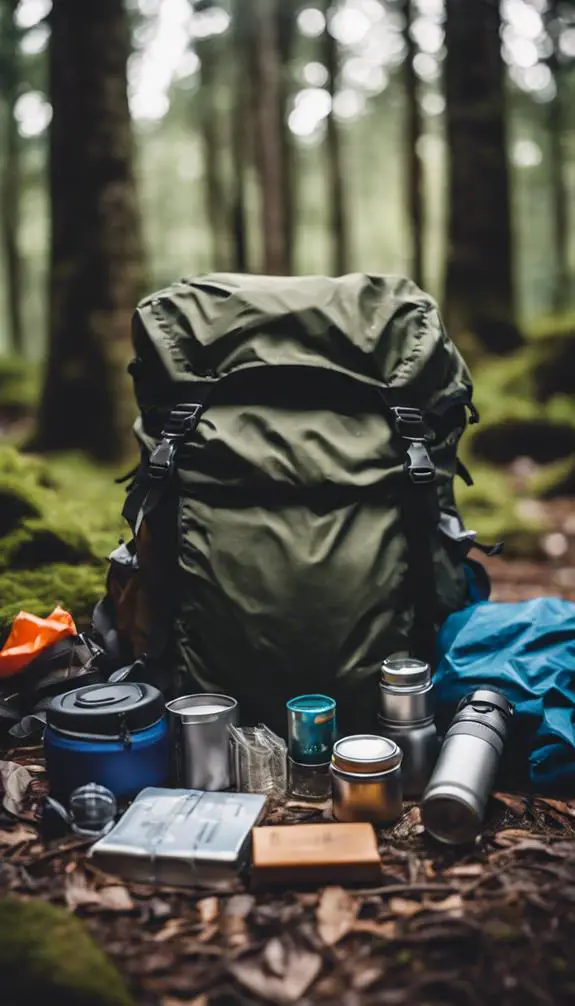
You'll need reliable shelter and protection to survive in the wilderness, and that starts with a sturdy tent or tarp to keep you dry and secure.
A good sleeping bag and pad will help you get a decent night's rest, which is vital for staying alert and focused.
Tent and Tarp Options
When venturing into the unknown, having a reliable shelter can be a lifesaver, and that's where tent and tarp options come in – providing a crucial layer of protection from the elements.
You'll want a tent that's lightweight yet durable, with a low tent weight to guarantee easy carrying. Look for options with water-resistant materials and a waterproof rating to keep you dry.
Tarps are another essential, offering an extra layer of protection from rain and wind. Consider tarp materials like nylon or polyester, which are waterproof and tear-resistant.
A good tarp can also serve as a makeshift shelter or windbreak in a pinch. By packing a reliable tent and tarp, you'll be prepared to weather any storm that comes your way.
Sleeping Bag and Pad
A good night's sleep can be a luxury in a survival situation, and a reliable sleeping bag and pad are crucial components of your shelter and protection essentials.
You'll need a sleeping bag that can keep you warm in extreme temperatures. There are several sleeping bag types to ponder, including down-filled, synthetic, and hybrid bags.
Each has its pros and cons, so choose one that suits your climate and preferences. A sleeping pad provides extra insulation and comfort.
Look for pad thickness options ranging from 1-4 inches, depending on your needs. A thicker pad may be more comfortable, but it'll also add bulk to your bug out bag.
Strike a balance between comfort and portability when selecting your sleeping bag and pad.
Ground and Insect Protection
In addition to a reliable sleeping bag and pad, having effective ground and insect protection is vital to a comfortable and safe shelter.
You'll want to prioritize protection from the ground up, literally. A waterproof ground cloth will keep you dry and warm, even on damp or wet terrain.
Insect screens are also a must-have, keeping biting bugs at bay while allowing for airflow. Look for screens with fine mesh and a durable design to guarantee they hold up in the wilderness.
Don't underestimate the importance of these essentials – a good night's sleep can make all the difference in a survival situation.
Fire Starting and Cooking Gear
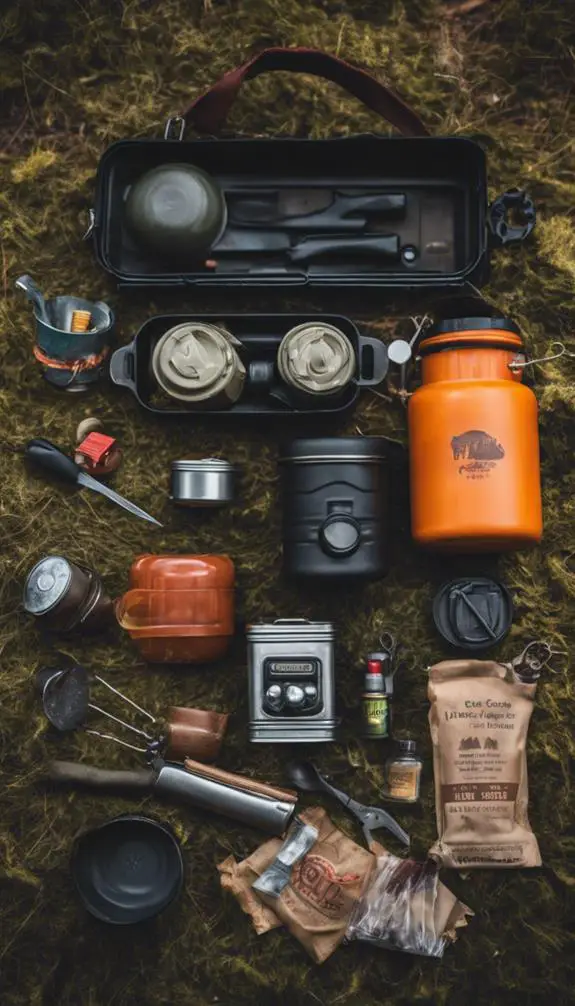
Gather your fire starting and cooking gear, as these essential tools will help you prepare hot meals and stay warm in a survival situation.
Invest in a reliable fire starter kit that includes waterproof matches, a lighter, and a ferrocerium rod. This will guarantee you can start a fire even in damp conditions.
When it comes to cooking, consider lightweight and durable cooking pot options, such as titanium or stainless steel pots. Look for ones with insulated handles and lids to prevent burns and heat loss.
Don't forget to pack a spork or multi-tool to make meal prep and eating easier. With these essentials in your bug out bag, you'll be able to cook hot meals and stay warm, even in the most challenging environments.
Navigation and Orientation Tools
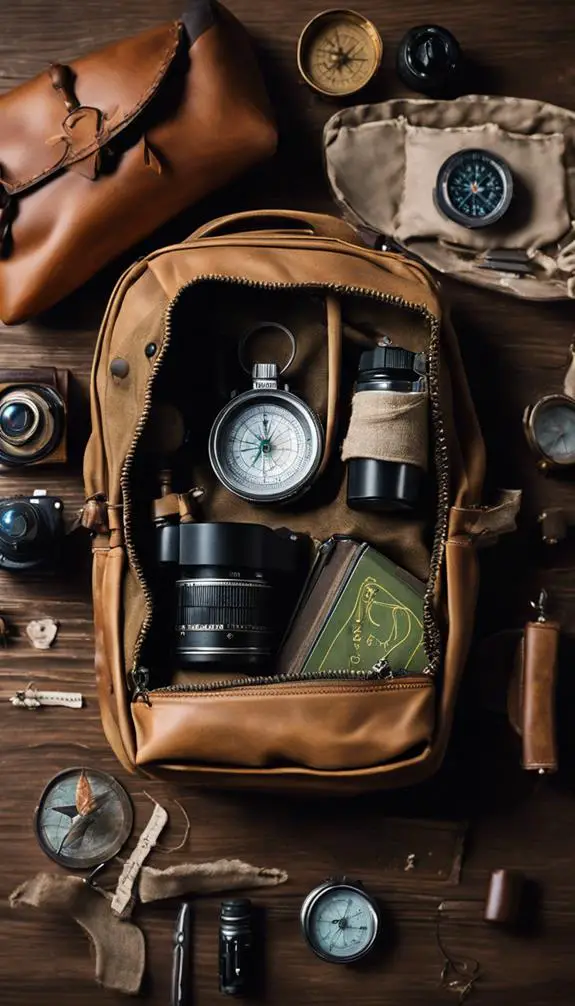
You've got a fire going and a hot meal in your belly, but now it's time to figure out where you're and where you're headed.
Navigation and orientation tools are vital in a bug out situation.
A topographic map, preferably waterproof and tear-resistant, is essential for understanding the terrain and identifying potential routes.
Practice your map skills beforehand to confirm you can read and navigate with confidence.
Don't forget a compass – there are several types, including magnetic, lensatic, and prismatic.
A magnetic compass is a good starting point, but consider investing in a more advanced model for increased accuracy.
Always carry a spare compass and know how to use it with your map to stay on track.
Communication and Signaling Devices
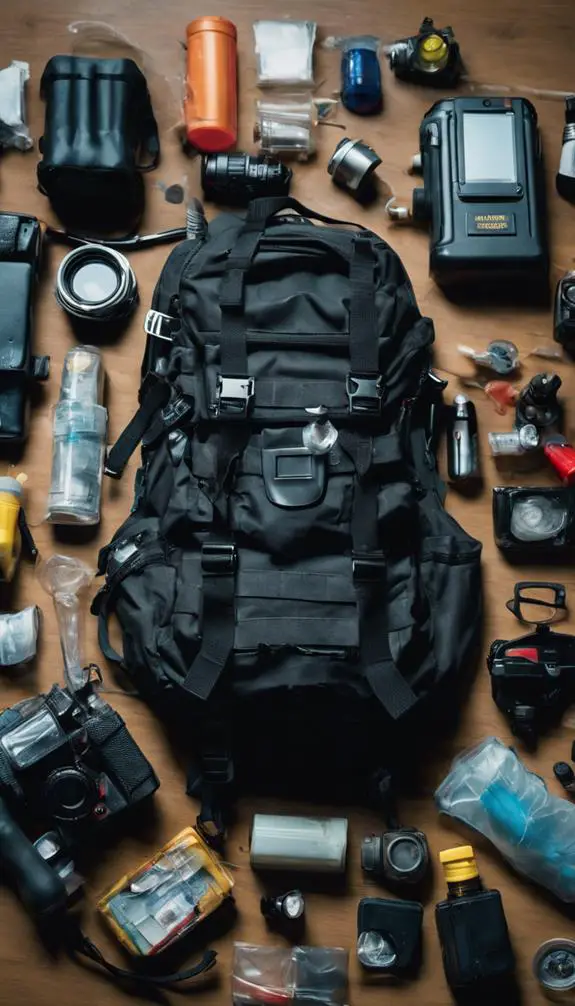
When you're on the move, staying in touch with family and receiving critical information is essential.
You'll need a reliable cell phone and charger, as well as alternative radio and earpiece options, to stay connected and informed.
Additionally, don't forget to pack simple yet effective signaling devices like a whistle and mirror to alert others to your presence if needed.
Cell Phone and Charger
In the midst of a crisis, staying connected to the outside world can be a lifeline, and your cell phone is often the most convenient means of doing so.
When packing your bug out bag, make sure to include a reliable cell phone and charger. Invest in a rugged cell phone case that can withstand rough handling and harsh environments.
Regularly inspect and clean your charger to verify it's functioning properly – a faulty charger can leave you disconnected when you need it most. Consider packing a portable power bank to extend your phone's battery life.
Don't forget to include a charging cable and wall adapter in your bag as well. By keeping your cell phone charged and functional, you'll be better equipped to stay informed, communicate with loved ones, and call for help when needed.
Radio and Earpiece Options
A reliable radio and earpiece setup can be a vital addition to your bug out bag, providing a means to receive critical information and stay in touch with your team or family members even when cell phone networks are down.
When selecting a radio, consider one that's durable, water-resistant, and has a long battery life.
Familiarize yourself with radio protocols, such as using a specific channel or frequency, to guarantee seamless communication.
For earpiece options, choose ones that fit comfortably and provide clear audio.
Look for earpieces with noise-cancelling features or those designed for use in noisy environments.
A good radio and earpiece setup will help you stay connected and informed, even in the most challenging situations.
Whistle and Mirror Signals
Surviving in a hostile environment often hinges on your ability to signal for help or convey crucial information to your team.
That's why a whistle and mirror are essential components of your bug-out bag's communication and signaling devices. A whistle is a simple yet effective way to produce a loud, high-pitched sound that can be heard from a distance, making it ideal for distress signals.
A mirror, on the other hand, can be used to create emergency reflections, signaling your location to rescuers or allies during the day.
When used together, these tools can greatly increase your chances of being seen or heard, helping you get the help you need in a survival situation.
Make sure to include a durable whistle and a compact mirror in your bug-out bag.
Food and Nutrition Essentials
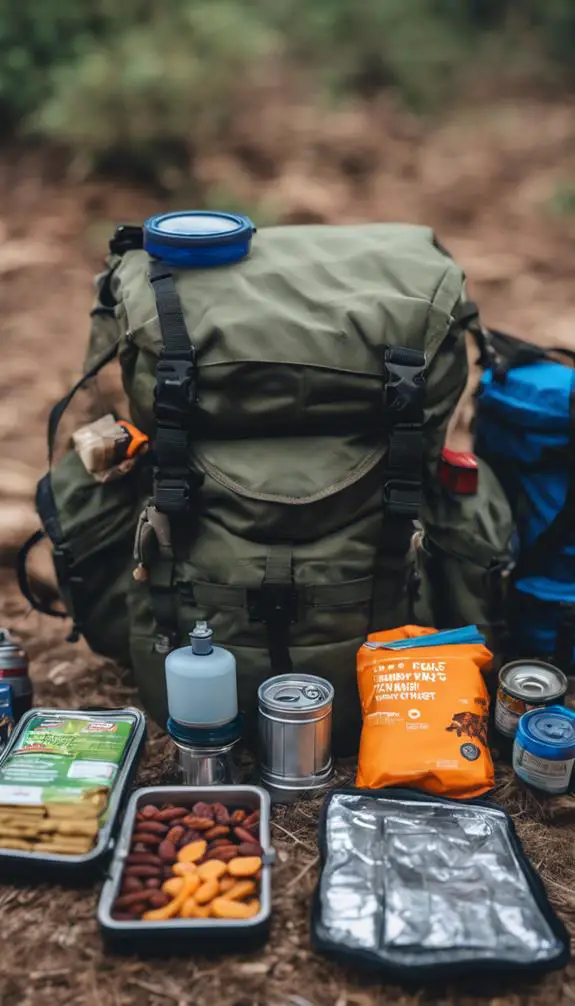
When disaster strikes, your energy levels will plummet if you're not fueled with the right food.
You need sustenance that's lightweight, compact, and packed with nutrients. Energy Bars are a great option, providing a quick boost to keep you moving. Look for brands with a long shelf life and high-calorie content.
MRE Options (Meals Ready to Eat) are another essential, offering a more substantial meal in a compact package.
Don't forget to include a water purification system or water filters to guarantee access to safe drinking water.
Aim for a minimum of three days' worth of food and water in your bug-out bag. With the right nutrition, you'll be better equipped to face the challenges of a disaster scenario.
Personal Hygiene and Sanitation
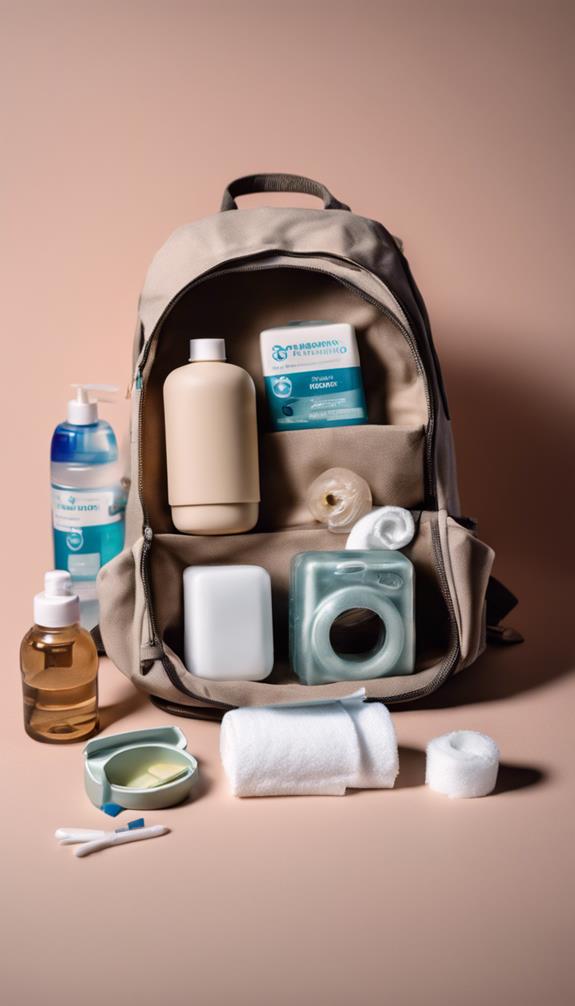
You'll need to prioritize personal hygiene and sanitation in your bug out bag to prevent the spread of illness and maintain a sense of dignity in a crisis.
When it comes to hand sanitizer, you'll want to ponder options that are effective against a broad spectrum of bacteria and viruses, as well as compact enough to carry easily.
Additionally, don't forget to pack biodegradable soap and a sufficient supply of toilet paper to guarantee you can maintain basic hygiene standards on the go.
Hand Sanitizer Options
In the midst of a crisis, maintaining personal hygiene and sanitation becomes essential to preventing the spread of diseases.
You'll want to prioritize hand sanitizer options in your bug out bag. When selecting a hand sanitizer, consider the type and travel size.
Look for gel or foam sanitizers with at least 60% alcohol content, as these are most effective against germs. Travel sizes are essential for your bug out bag, as they're lightweight and compact.
Opt for 1-2 ounce bottles or packets that won't take up too much space. Some popular hand sanitizer brands include Purell, Germ-X, and Babyganics.
Don't forget to pack a few extras in case of emergencies or for sharing with family members.
Biodegradable Soap Needs
Beyond hand sanitizer, biodegradable soap is another essential element of personal hygiene and sanitation in a bug out bag.
You'll want to pack soap that's gentle on skin and the environment. Look for eco-friendly options that are free of harsh chemicals and artificial fragrances.
Soap alternatives like baby wipes or soap leaves can be effective substitutes when water is scarce. Consider packing a small supply of biodegradable soap sheets or a compact soap bar that's designed for backpacking.
These options are lightweight, compact, and won't contaminate water sources. When choosing a biodegradable soap, make sure it's specifically designed for outdoor use and is gentle on skin.
This will help you maintain personal hygiene while minimizing your impact on the environment.
Toilet Paper Supply
When nature calls, having a reliable toilet paper supply is essential for maintaining personal hygiene and sanitation in a bug-out situation.
You should pack a sufficient amount of toilet paper rations in your bug-out bag, considering the number of people and the duration of your stay.
Aim for at least one roll per person per week. Additionally, include emergency wipes as an alternative for when toilet paper isn't available.
These can be used for quick cleanups and can help prevent the spread of diseases.
Don't forget to store them in a waterproof container to keep them dry and usable.
Clothing and Footwear Essentials
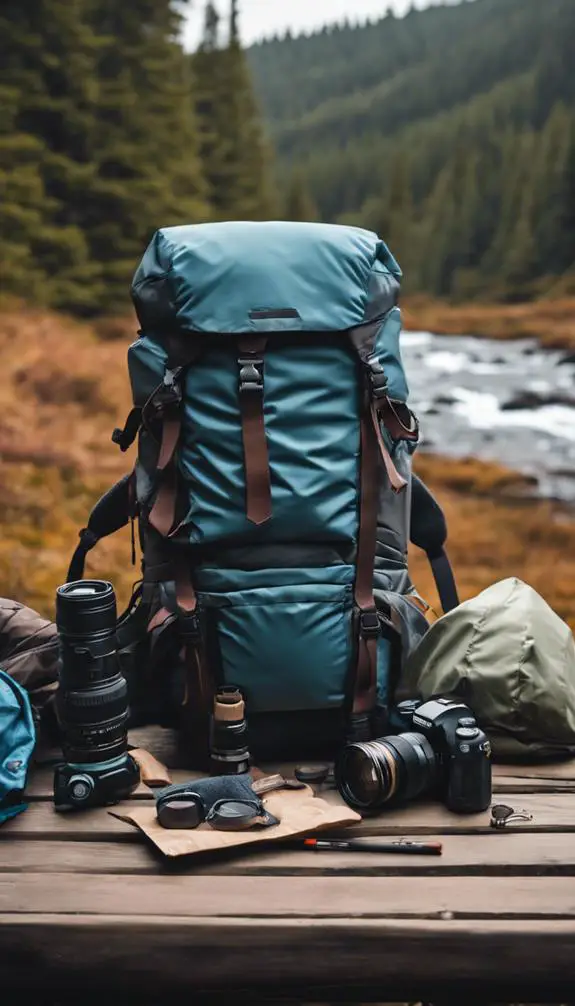
You'll need clothing and footwear that can keep up with the demands of surviving in the wilderness or traversing through a disaster zone.
Pack layers of breathable, moisture-wicking clothing that can adapt to changing temperatures. Include a waterproof and windproof jacket and pants for cold weather and rain gear.
Don't forget a warm hat and gloves for extreme cold. Sturdy, ankle-high boots with good tread are essential for traversing rough terrain.
Consider waterproof boots to keep your feet dry. Add extra socks and underwear to your bag, as well as a change of clothes in case your primary layers get wet.
Lighting and Illumination Tools
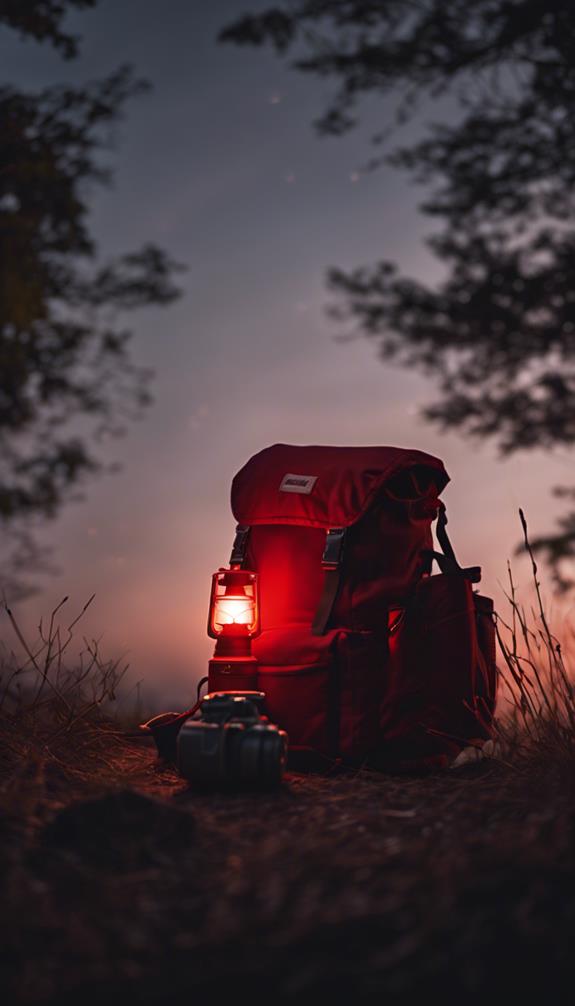
Having a reliable light source can be a game-changer in a survival situation, especially when daylight dwindles or you're operating in dark environments.
You'll want to include a combination of lighting tools in your bug out bag to guarantee you're prepared for any scenario.
LED flashlights are a great option due to their energy efficiency and long battery life.
Look for one that's waterproof and has adjustable brightness settings.
Solar lanterns are another excellent choice, as they're rechargeable and can provide ambient lighting.
Consider a lantern with a USB charging port to keep your other devices powered up.
Don't forget extra batteries and a backup power source, like a portable solar panel, to keep your lights shining bright.
Self-Defense and Protection Tools
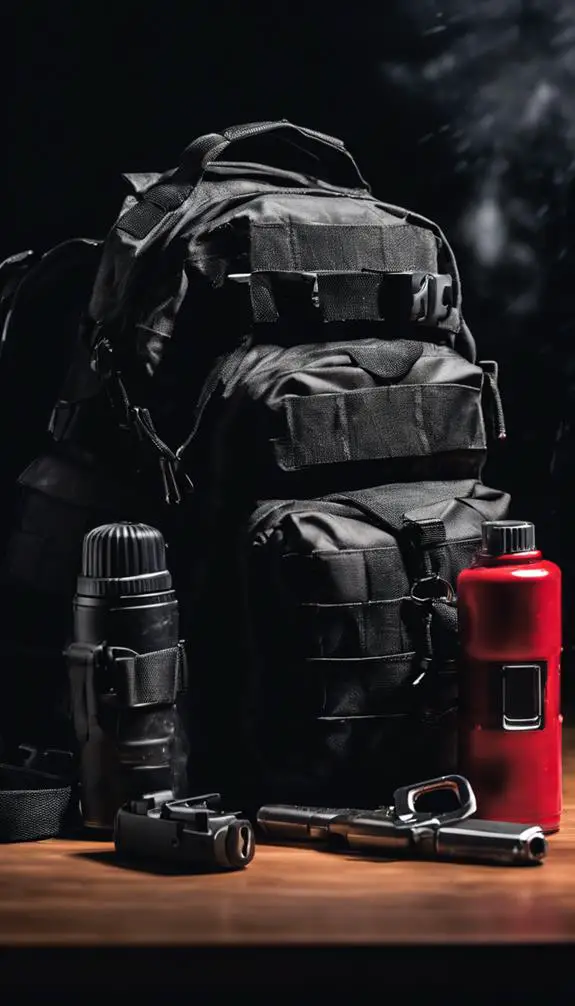
As you prepare for the unknown, paramount to ponder your personal safety and security.
In a bug-out situation, you may face unpredictable threats, and key to be prepared. That's why including self-defense and protection tools in your bag is imperative.
A compact pepper spray can be an effective deterrent against an attacker, giving you time to escape. Consider a concealed holster to carry a handgun, allowing you to protect yourself and your loved ones if needed.
These tools aren't meant to instill fear, but rather confidence in your ability to defend yourself. Remember, your safety is paramount, and having these tools at your disposal can be a lifesaver in a high-stress situation.
Multi-Tool and Utility Items
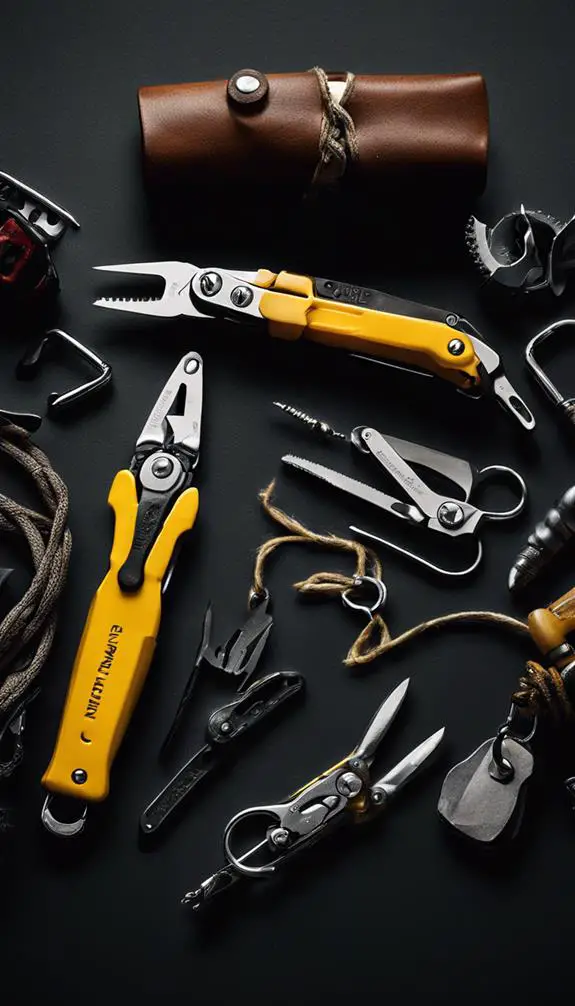
A well-stocked bug-out bag should include a multi-tool, a versatile device that combines several functions in one compact unit.
This handy tool will help you tackle various tasks, from cutting and tightening to opening cans and fixing gear. Consider a multi-tool with a pocket knife, pliers, screwdriver, and wire cutter. Store it in a tool pouch or attach it to your belt for easy access.
You'll appreciate having this multipurpose tool when you need to MacGyver a solution in a survival situation. Don't forget to add other utility items like rope, duct tape, and a fire starter to your bug-out bag. These items will help you overcome obstacles and stay safe on the move.
Important Documents and Papers
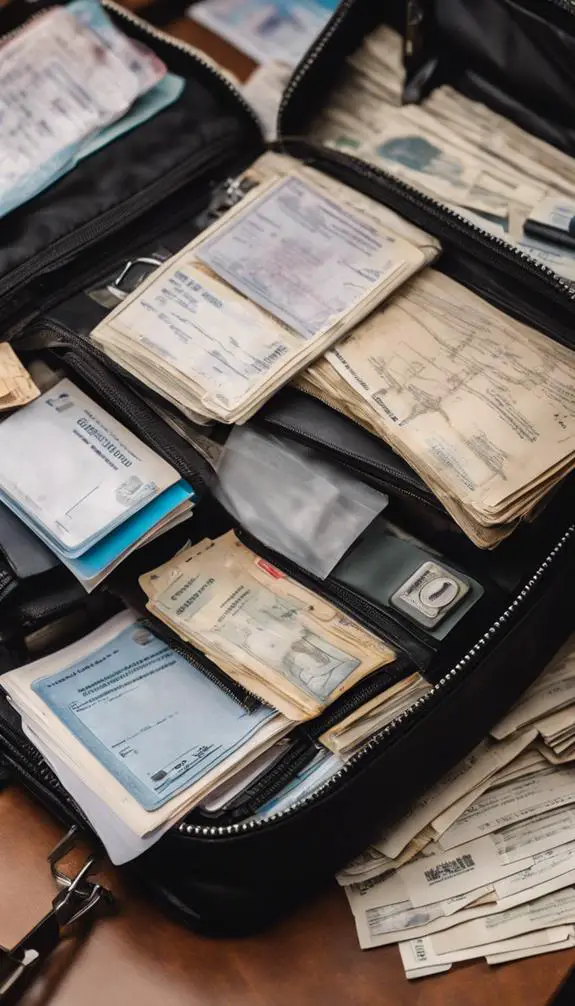
Your bug-out bag should contain a waterproof container holding essential documents and papers, such as copies of identification, insurance cards, and birth certificates.
These documents serve as identity proof and can be pivotal in emergency situations. Make sure to include copies of insurance policies, including health, life, and property insurance.
You should also pack copies of prescriptions, medical records, and any other key papers. Don't forget to include a list of emergency contacts and their phone numbers.
Remember to update these documents regularly to confirm they remain valid and relevant. By having these documents readily available, you'll be better prepared to handle unexpected situations and maintain your freedom.
FAQs
How Often Should I Update and Refresh My Bug Out Bag Contents?
You should regularly review your emergency kit's contents, performing seasonal checks to guarantee relevance and functionality, and verifying expiration dates of supplies like food, meds, and batteries to maintain their effectiveness in a crisis.
Can I Customize My Bug Out Bag for Specific Emergency Scenarios?
You can tailor your emergency preparedness to specific regional threats and environmental hazards, like wildfires or hurricanes, by customizing your gear and supplies to meet those unique challenges, ensuring you're better equipped to respond and adapt.
Should I Keep My Bug Out Bag at Home or in My Vehicle?
You're deciding where to stash your emergency kit: at home for convenience or in your vehicle for instant access. Consider your daily routine and emergency scenarios – if you're always on-the-go, vehicle access might be key, but home convenience can't be beat.
How Do I Ensure My Bug Out Bag Is Accessible to All Family Members?
You guarantee everyone can access your emergency kit by holding regular family meetings to discuss its location and contents, and incorporating accessibility features like clear labeling, easy-to-carry designs, and a designated spot for each family member.
Are There Any Specific Bug Out Bag Requirements for Pets or Infants?
When preparing for emergencies with pets or infants, you'll want to prioritize their safety and comfort. Consider adding pet carriers or baby slings to your kit, allowing you to quickly and easily transport them to safety.
Conclusion
You've packed the essentials, now you're ready to roll. Remember, a bug-out bag is not a one-time task, it's an ongoing process. Check and update your gear regularly to guarantee it remains relevant and effective. Stay vigilant, stay prepared, and you'll increase your chances of survival in an emergency situation.

